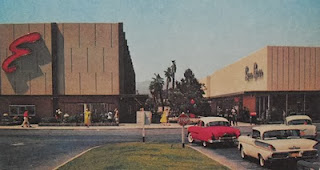Elementary and secondary students should know the whole history of Thanksgiving, which extends beyond the 1620s (and is much more complex than is usually portrayed in the media). It is true that there was a harvest celebration at Plymouth in 1621 (it was not a thanksgiving). It is true that Squanto (whose name was Tisquantum and who had been previously kidnapped by English fisherman) and Massasoit helped the Separatists survive their first winter (out of political necessity). It is true that the two groups lived in relative peace for several years. It is true that eventually, conflicts grew between the two groups and the Whites demanded that the Wampanoag eventually give up their guns. It is true that the Whites did not respect the Indigenous peoples' way of life and issues of the Whites' cattle rampaging Native villages were common. It is true that war would break out and Metacom/King Philip, the Wamponoag chief, would be killed. His head would later be placed on a pike at the entrance of Plymouth and remained for over two decades. It is true that the English attempted to Christianize the Native people and "praying towns" were formed for this purpose. It is also true that in 1970, Wamsutta (Frank B.) James was asked to speak and then had his speech suppressed by the local officials holding the 350th anniversary celebration of Pilgrim's landing. A protest of this resulted in the first National Day of Mourning, where a group of Native activists protested their oppression by pouring red paint on Plymouth Rock and occupying the Mayflower II. It is true that jessie little doe baird has led an effort by the Wamponoag people to reclaim their language as a form of survivance. It is critical that this event is taught through the lens of Native resistance and uplift. Below are a few resources that may help...
Here is a list of links for elementary and secondary teachers to teach the whole story of Thanksgiving (several more were added in a 2020 update of this post):
Adult Books:
An Indigenous Peoples' History of the United States (2020 Update)
New Worlds for All: Indians, Europeans, and the Remaking of America
The Name of War: King Philip's War and the Origins of America
Teen and Children's Books:
An Indigenous Peoples' History of the United States for Young People (2020 Update)
1621: A New Look at Thanksgiving (National Geographic)
Squanto's Journey: The Story of the First Thanksgiving
Teaching Resources:
First National Day of Mourning
The Suppressed Speech of Wamsutta (Frank B.) James, Wampanoag (1970)
National Day of Mourning: United American Indians of New England
PBS American Experience: We Shall Remain: After the Mayflower
[Full Video]
Mashpee Wampanoag Tribe: Historical Timeline (2020 Update)
Massachusetts Indigenous Legislative Agenda (2020 Update)
Zinn Education Project: The Politics of Thanksgiving Day (2020 Update)
Rethinking Schools: Rethinking Thanksgiving: Myths and Misgivings (2020 Update)
NPR: What Educators Need To Know About Teaching Thanksgiving (2020 Update)
Age of Awareness: Decolonizing Thanksgiving Toolkit (2020 Update)
The New Yorker: The Invention of Thanksgiving (2020 Update)
Washington Post: Making Indian Headdresses in School Is a Terrible Way to Teach Thanksgiving (2020 Update)
History News Network: Top Ten Myths About Thanksgiving
National Archives: Thanksgiving as a National Holiday
Smithsonian: Thanksgiving
History Channel: Thanksgiving
Plimoth Plantation: Thanksgiving

















